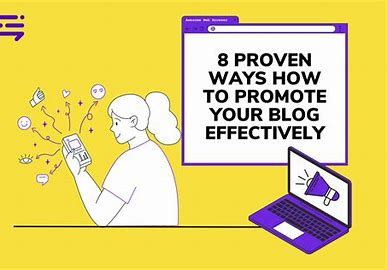Building a passive income blog is a strategic endeavor that combines passion, expertise, and effective monetization techniques. By focusing on creating valuable content and leveraging affiliate marketing, you can establish a sustainable income stream. This guide will walk you through the essential steps to build a passive income blog and recommend affiliate products to promote within your content.
Choose Your Niche

Selecting the right niche is crucial for your blog’s success. Aim for a niche that aligns with your interests and has a proven track record of profitability. Popular niches for passive income blogs include:
- Personal Finance: Budgeting tips, investment strategies, and debt management.
- Health and Wellness: Fitness routines, mental health advice, and nutrition guides.
- Technology and Gadgets: Latest tech reviews, gadget comparisons, and software tutorials.
- Lifestyle and Travel: Travel itineraries, lifestyle hacks, and cultural experiences.
- Online Business and Entrepreneurship: Business ideas, startup strategies, and online money-making methods.
Choosing a niche you’re passionate about will help you maintain consistency and authenticity in your content.
Set Up Your Blog

Once you’ve chosen your niche, it’s time to set up your blog. Here’s a step-by-step guide:
- Domain Name and Hosting: Select a memorable domain name that reflects your niche. Use a reliable hosting service to ensure your blog is always accessible. Bluehost and SiteGround are excellent hosting providers.
- Content Management System (CMS): WordPress is a popular choice due to its flexibility and user-friendly interface.
- Design and Layout: Choose a clean, responsive theme that offers a pleasant user experience across devices. Premium themes from ThemeForest or free themes from the WordPress repository can be great options.
- Essential Plugins: Install plugins for SEO optimization, social media sharing, and site security. Popular plugins include Yoast SEO and WP Rocket.
Create High-Quality Content

Content is the backbone of your blog. Focus on creating informative, engaging, and valuable posts that address your audience’s needs. Incorporate various content types such as:
- How-To Guides: Step-by-step instructions on relevant topics.
- Product Reviews: In-depth analyses of products within your niche.
- Listicles: Curated lists that provide value, like “Top 10 Budgeting Apps.”
- Personal Stories: Share your experiences to build a connection with your readers.
- Case Studies and Success Stories: Analyze success stories in your niche to provide inspiration and actionable insights.
Regularly updating your blog with fresh content will keep your audience engaged and improve your site’s SEO ranking.
Implement Affiliate Marketing

Affiliate marketing is a powerful tool for generating passive income. By promoting products or services relevant to your niche, you can earn commissions on sales made through your referral links. Here’s how to get started:
- Identify Relevant Affiliate Programs: Look for programs that offer products or services aligned with your content. For instance, if your blog focuses on personal finance, consider promoting financial tools or budgeting apps.
- Join Affiliate Networks: Platforms like ShareASale and ClickBank provide access to a variety of affiliate programs across different niches.
- Integrate Affiliate Links Naturally: Incorporate affiliate links into your content in a way that feels organic and provides value to your readers.
- Disclose Affiliate Relationships: Maintain transparency with your audience by disclosing your affiliate partnerships.
For example, if you’re writing a post on effective budgeting strategies, you might recommend a budgeting app like You Need A Budget (YNAB), providing your affiliate link for readers interested in trying the app.
Optimize for SEO

Search Engine Optimization (SEO) is essential for driving organic traffic to your blog. Implement the following strategies:
- Keyword Research: Identify and incorporate relevant keywords that your target audience is searching for.
- On-Page SEO: Optimize your titles, headings, meta descriptions, and images with appropriate keywords.
- Internal and External Linking: Link to other relevant posts on your blog and reputable external sources to enhance credibility.
- Mobile Optimization: Ensure your blog is mobile-friendly, as a significant portion of users access content via mobile devices.
Utilizing SEO tools like Ahrefs or SEMrush can provide valuable insights into your site’s performance and help you identify opportunities for improvement.
Build an Email List

An email list allows you to engage directly with your audience and promote your content and affiliate products effectively. To build your list:
- Offer Lead Magnets: Provide free resources like eBooks, checklists, or templates in exchange for email sign-ups.
- Use Opt-In Forms: Place sign-up forms strategically throughout your blog, such as in the sidebar, within posts, or as pop-ups.
- Engage with Subscribers: Send regular newsletters with valuable content, updates, and exclusive offers.
Email marketing platforms like ConvertKit and MailChimp can help you manage your subscribers and campaigns efficiently.
Monetization Beyond Affiliate Marketing

Aside from affiliate marketing, there are several other ways to generate passive income from your blog:
- Sponsored Content: Partner with brands to publish paid blog posts promoting their products or services.
- Digital Products: Create and sell eBooks, online courses, or printables that provide value to your audience.
- Membership and Subscription Models: Offer premium content to paying subscribers for exclusive insights and resources.
- Display Advertising: Use ad networks like Google AdSense or Mediavine to generate income from banner ads.
Promote Your Blog

To attract visitors to your blog, implement a multi-faceted promotion strategy:
- Social Media Marketing: Share your content on platforms like Facebook, Twitter, Instagram, and LinkedIn to reach a broader audience.
- Guest Posting: Write articles for other reputable blogs in your niche to gain exposure and backlinks.
- Engage in Online Communities: Participate in forums, groups, and communities related to your niche to establish authority and drive traffic.
- Paid Advertising: Consider using pay-per-click (PPC) advertising to increase visibility and attract targeted traffic.
Conclusion
Building a passive income blog requires dedication, strategy, and consistent effort. By choosing the right niche, creating high-quality content, leveraging affiliate marketing, and optimizing for SEO, you can establish a sustainable source of income. Additionally, building an email list, exploring multiple monetization streams, and promoting your blog effectively will ensure long-term success. Start your journey today, and turn your blog into a profitable asset!